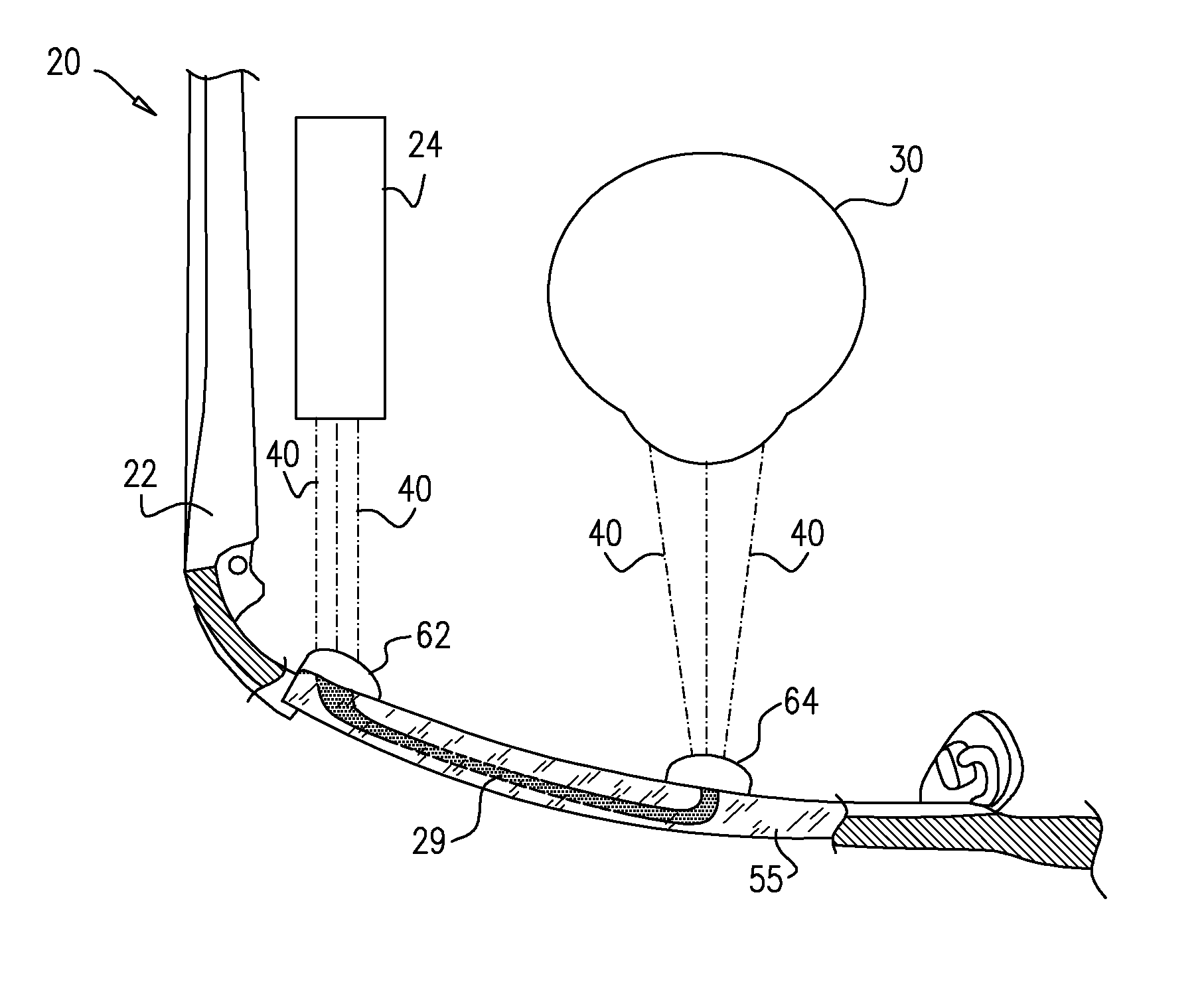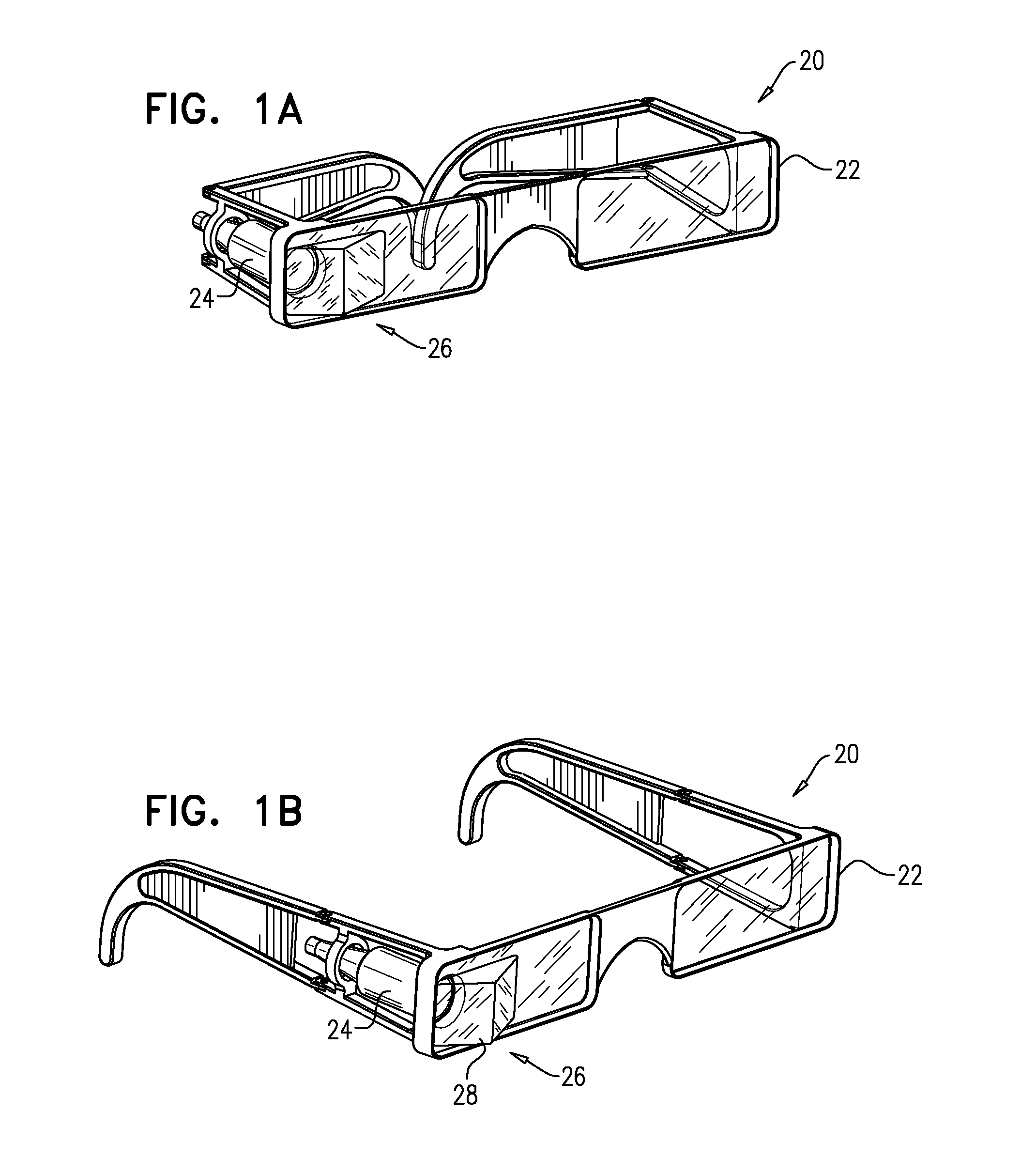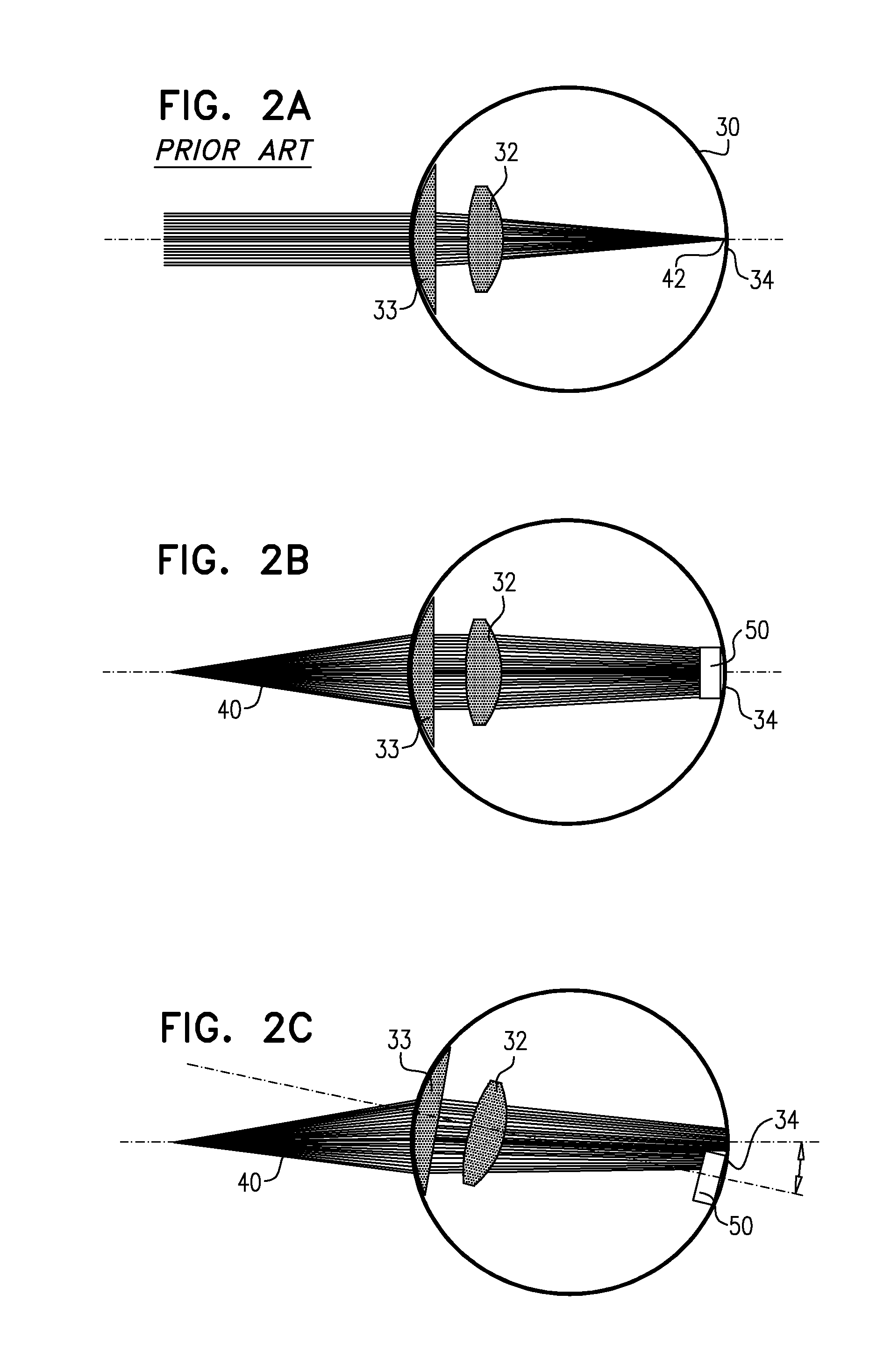Wearable apparatus for delivery of power to a retinal prosthesis
a technology for retinal prosthesis and wearable equipment, which is applied in the direction of instruments, artificial respiration, therapy, etc., can solve the problems of retinal malfunction, blindness and visual impairment,
- Summary
- Abstract
- Description
- Claims
- Application Information
AI Technical Summary
Benefits of technology
Problems solved by technology
Method used
Image
Examples
Embodiment Construction
[0138]Reference is made to FIGS. 1A-B and 2A-C. FIGS. 1A-B are schematic illustrations of apparatus comprising an extraocular device 20, in accordance with some applications of the present invention. Extraocular device 20 typically comprises an eyeglasses frame 22, which is placed in front of an eye of a subject. A power source 24, e.g., a laser, is coupled to frame and emits a beam of light, e.g., a collimated beam, a diverging beam, or a converging beam, that is outside of the visible light range, e.g., outside 380-750 nm. For example, the power source may be configured to emit the beam of light in the range of 750-900 nm. Typically the beam of light is configured to power an intraocular device, e.g., a retinal prosthesis, which is implanted in the subject's eye. The intraocular device is typically configured to receive the beam of light from the power source and to generate a power signal to power the intraocular device.
[0139]Typically, a light-guiding element 26, e.g., a prism (...
PUM
 Login to View More
Login to View More Abstract
Description
Claims
Application Information
 Login to View More
Login to View More - R&D
- Intellectual Property
- Life Sciences
- Materials
- Tech Scout
- Unparalleled Data Quality
- Higher Quality Content
- 60% Fewer Hallucinations
Browse by: Latest US Patents, China's latest patents, Technical Efficacy Thesaurus, Application Domain, Technology Topic, Popular Technical Reports.
© 2025 PatSnap. All rights reserved.Legal|Privacy policy|Modern Slavery Act Transparency Statement|Sitemap|About US| Contact US: help@patsnap.com



